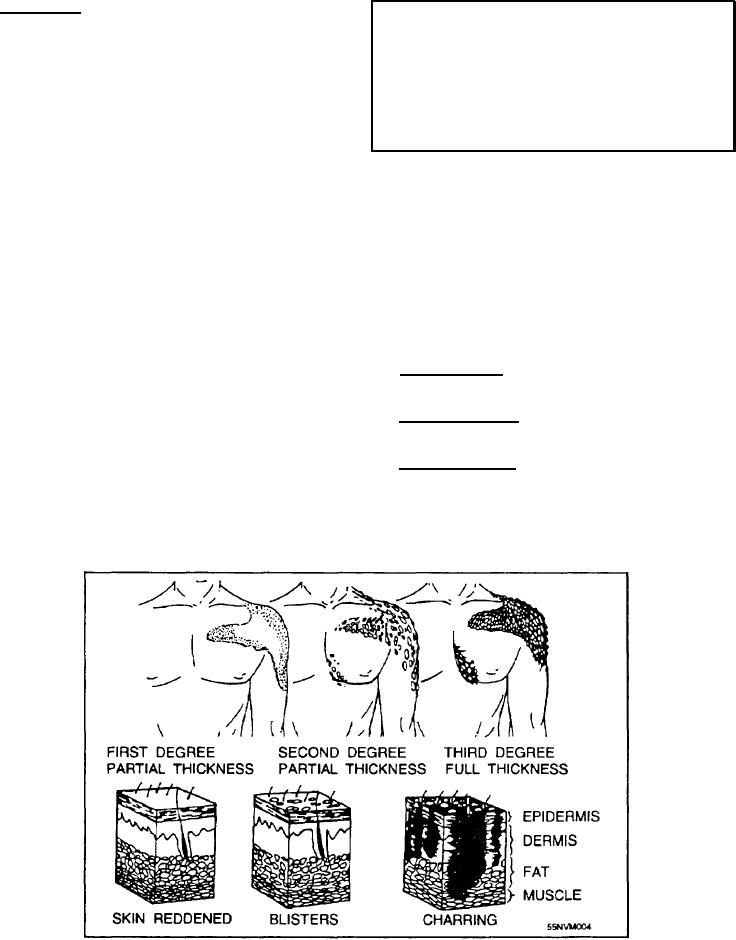
razors, or broken glass. Incisions tend to bleed very
and mark a large T on the victim's forehead to alert
medical personnel that the patient has a tourniquet.
freely because the blood vessels are cut straight across.
Lacerations. Lacerations are wounds that are tom,
WARNING
rather than cut. They have ragged, irregular edges and
masses of tom tissue underneath. Lacerations are
Remember, use a tourniquet as a last
usually made by blunt forces, rather than sharp objects.
resort to control bleeding that cannot be
They are often complicated by crushing of the tissues as
controlled by other means. Tourniquets
well.
should be removed by medical personnel
only.
For additional information on first aid, refer to the
Standard First Aid Training Course, NAVEDTRA
BURNS
12081.
The principal dangers from burns are shock and
BLEEDING
infection. Direct all casualty care measures toward
You should use the direct-pressure method to
combating shock, relieving pain, and preventing
control bleeding. Use a compress made with a clean rag,
infection.
handkerchief, or towel to apply direct pressure to the
Classification of Burns
wound. If the direct-pressure method does not stop the
Burns may be classified according to their cause as
bleeding, use the pressure point (fig. 1-1 3) nearest the
thermal, chemical, or electrical.
wound.
Thermal burns. A thermal burn is the direct result
Use a tourniquet on an injured limb only as a last
of heat caused by fire, scalding, sun, or an explosion.
resort; for example, if the control of hemorrhaging
cannot be stopped by other means. Apply a tourniquet
Chemical burns. A chemical burn is caused by
chemical action, such as battery acid on the skin.
above the wound (towards the trunk) and as close to the
wound as practical.
Electrical burns. An electrical burn is caused by
electrical current passing through tissue or the
Any long, flat material can be used as a band for a
superficial wound caused by electrical flash.
tourniquet--belts, stockings, flat strips of rubber, or a
neckerchief. Only tighten the tourniquet enough to stop
Bums are also classified as first, second, or third
the flow of blood. Use a marker pencil, crayon, or blood
degree, based on the depth of skin damage (fig. 1-14).
Figure 1-14.--First-, second-, and third-degree burns.
1-23

